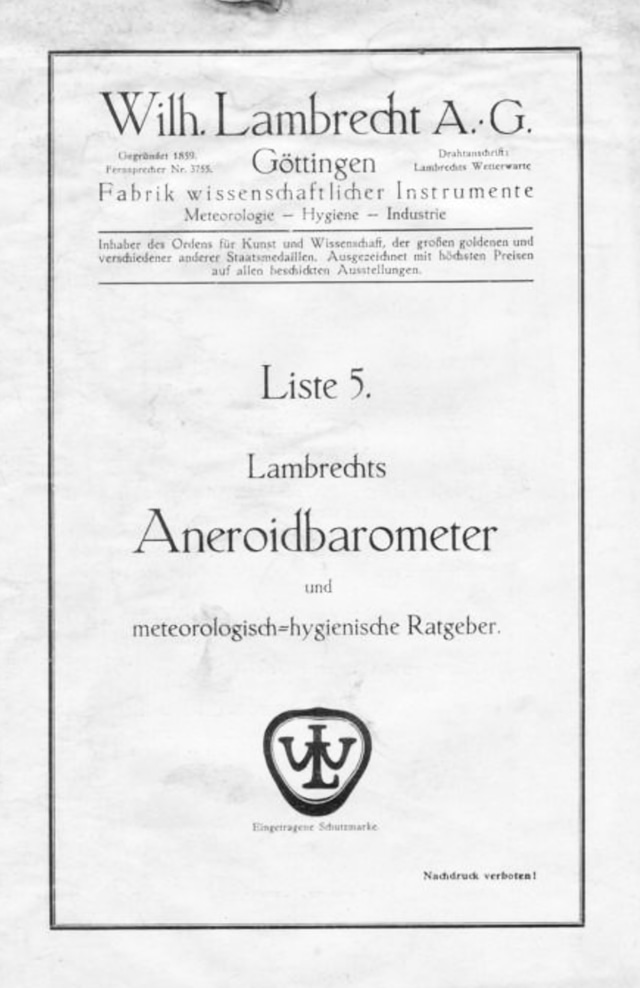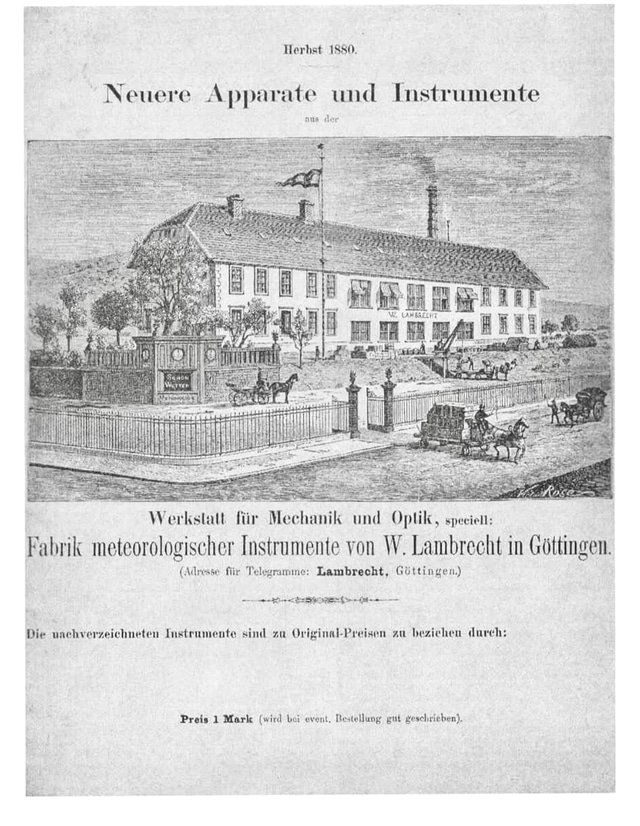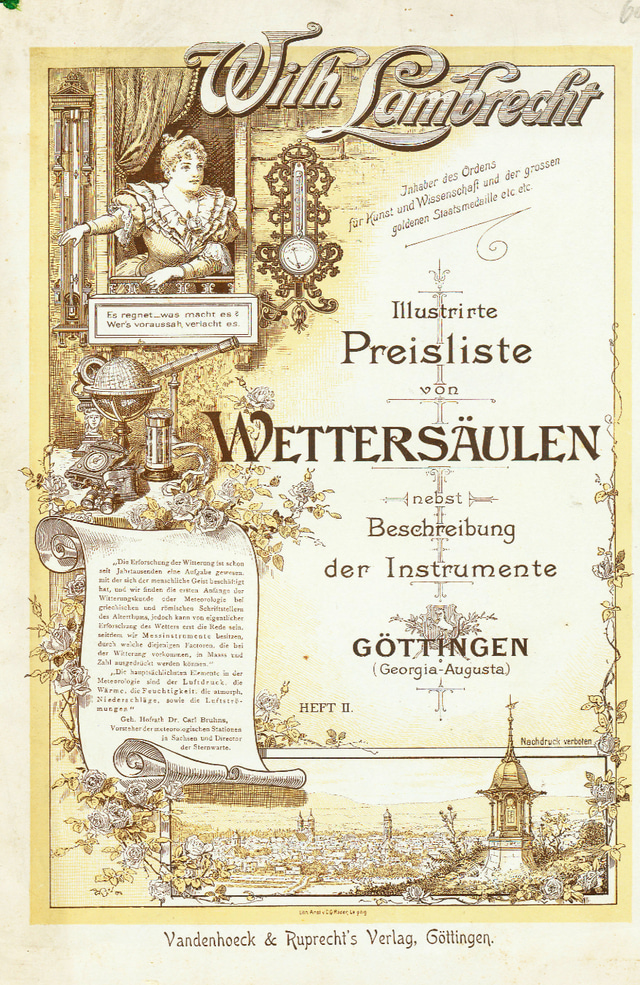


The Wilh. Lambrecht company was founded by Wilhelm Lambrecht (1834–1904), who began his career with a five-year apprenticeship as a mechanic in Einbeck. His interest in instrument-making arose from working with cumbersome and unreliable measuring devices of the time, such as mercury barometers. After completing his training, he worked in workshops in Paris and Berlin before opening his own business in Einbeck in 1859.
In 1864, Lambrecht moved to Göttingen, where he collaborated with scientists such as chemist Friedrich Wöhler and physicist Leopold Weber. During this time, he worked on developing a reliable power source for an invention by astronomer Wilhelm Klinkerfues—an electric gas lighter. However, this project did not achieve significant success.
Upon returning to Göttingen in 1874, Lambrecht focused on meteorological instruments, creating devices such as the hair hygrometer “Klinkerfues model,” polymeter, dew-point mirror, and aspirational psychrometer. His weather telegraphs and weather columns, which combined various meteorological instruments, gained widespread popularity before World War I, particularly in major cities and spa resorts.
In addition to meteorological instruments, Lambrecht made significant contributions to medical thermometers. He invented the minimum thermometer with a constriction in the capillary above the mercury reservoir, allowing it to record minimum temperatures, especially useful in medical contexts. Lambrecht’s precision instruments brought global recognition to his name and laid the foundation for the company’s future development.
After Lambrecht’s death in 1904, he left no heirs, but his business continued as a limited liability company. Today, the company is known as Wilh. Lambrecht KG, specializing in the production of climatological measuring and control instruments. Based in Göttingen, it remains globally renowned for its high-precision and high-quality instruments.
In 2019, Lambrecht meteo became part of the AEM brand portfolio, enabling the company to expand its global reach and integrate its advanced sensors with other technologies for weather monitoring and climate resilience.